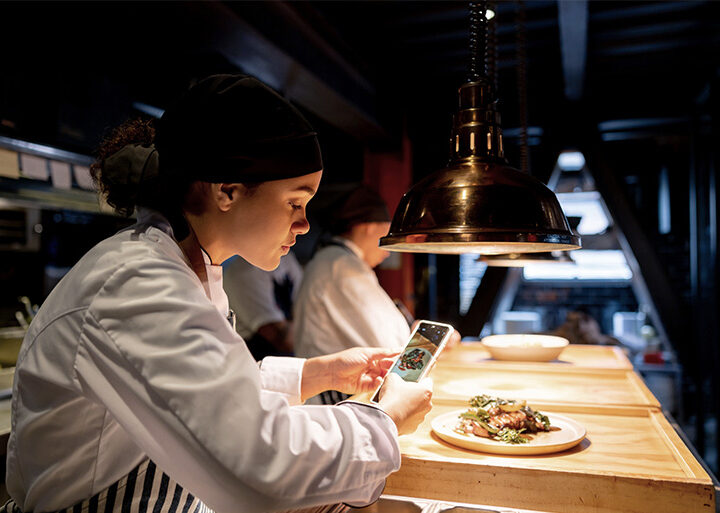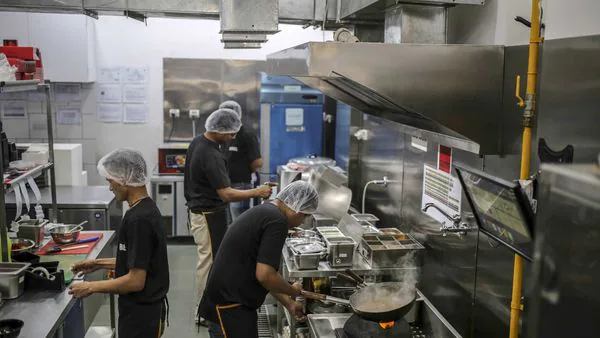Author: Subhash Sahni
Use-case: Delivery + Dine‑in (India)
Why this guide? A simple framework that calculates Ideal Sales, Rent, Salaries, Monthly Opex, and Initial Setup Cost just from your COGS (Cost of Goods Sold).
1) Industry Thumb Rules (India)
- Food Cost (COGS): 28% – 35% of Sales (benchmark: 30%)
- Rent: 8% – 12% of Sales (benchmark: 10%)
- Salaries (Payroll): 15% – 20% of Sales (benchmark: 18%)
- Other Opex: 10% – 15% of Sales (benchmark: 12%)
- EBITDA target: ~15% – 20%
Benchmarks can vary depending on city, format, and stage of the brand. This guide provides a practical starting point.
2) Core Formulas (using 30% Food Cost benchmark)
- Sales = COGS ÷ 0.30
- Ideal Rent = Sales × 0.10
- Ideal Salaries = Sales × 0.18
- Monthly Opex = Sales × 0.12
- Initial Setup Cost (Capex) = Sales × 5
For range analysis, use Food Cost of 28% or 35%; keep other ratios the same.
Quick Example
If COGS = ₹45:
- Sales = 45 ÷ 0.30 = ₹150
- Rent = 150 × 0.10 = ₹15
- Salaries = 150 × 0.18 = ₹27
- Opex = 150 × 0.12 = ₹18
- Setup Cost = 150 × 5 = ₹750
3) Interpretation & Tips
- High COGS? Either increase menu pricing or optimize procurement/portion control.
- Rent above 12%? It might be justified for high-footfall/prime locations, but for delivery-heavy models 8–10% is best.
- Payroll spike? Smart scheduling and cross-utilization of staff can save 2–3%.
- Opex includes marketing, utilities, packaging, software, cleaning, AMC, and minor repairs.
- Capex thumb rule (5× Sales/month) gives a conservative buffer for new outlets (kitchen + interiors + licenses + pre‑opening working capital).
4) How to Use This Framework
- Input your COGS (monthly or per-plate).
- Derive Sales using the formula.
- Use percentages to map out rent, payroll, opex, and setup budget.
- Compare your current numbers with benchmarks to see where you are over/under-spending.
5) FAQ
Q. Monthly vs Per‑plate COGS?
You can input either per‑plate COGS or monthly total COGS. The output context will follow the same (per‑plate or monthly).
Q. When should I adjust benchmarks?
For high‑street dine‑in formats, rent % can be higher. For cloud/delivery models, it should be lower. Payroll % depends on staff skill mix and operating hours.
Q. Why 5× Sales for Setup Cost?
It covers kitchen setup, interiors, licenses, and pre‑opening working capital. Mature brands refine this multiplier using past data.
Credits: Framework by RestroMark (Subhash Sahni). You may re‑label the calculator for your own brand if needed.
6) Detailed Explanation of Every Calculation
6.1 Sales Derived from COGS
- Food Cost % definition:
Food Cost % = COGS ÷ Sales. - Rearranged for Sales:
Sales = COGS ÷ Food Cost %. - Why 28–35%? In India, efficient restaurants typically keep food cost between 28% and 35%. Use 28–30% for tight control/cloud kitchen menus; use 32–35% for premium ingredients or experiential dining.
- Per‑plate vs Monthly: If you input per‑plate COGS, the derived Sales is your target selling price (before taxes). If you input monthly COGS, the derived Sales is your target monthly revenue.
6.2 Ideal Rent = Sales × 10%
- Logic: Rent is a fixed overhead and should scale with sales capacity. A 10% benchmark balances visibility with profitability; 8–12% is acceptable depending on location and mix (delivery vs dine‑in).
- Useful conversions:
- Allowed monthly rent (₹) =
Sales × 0.10 - Allowed rent per sq ft (₹/month) =
(Sales × 0.10) ÷ Area (sq ft) - Daily rent (₹/day) =
(Sales × 0.10) ÷ 30
- Allowed monthly rent (₹) =
- Interpretation: If your actual rent is higher than this band, you must either grow sales proportionally or renegotiate/relocate.
6.3 Ideal Salaries = Sales × 18%
- What’s included: FOH + BOH wages, employer PF/ESI contributions, overtime, outsourced housekeeping/security (if any). Excludes promoter/founder draws.
- Why 18%? Balanced staffing for quality service and kitchen throughput; 15–20% is the normal range.
- Operational check:
Sales per Labor Hour (SPLH) = Total Sales ÷ Total labor hours. If SPLH is falling, rework staffing levels, shift rosters, or menu complexity.
6.4 Monthly Opex = Sales × 12%
- What’s included: Utilities, packaging, cleaning & hygiene, linen & disposables, software/POS, smallwares, marketing (base), AMC & minor repairs, subscription tools, staff meals, licenses renewals, basic insurance.
- Why 12%? Typical steady‑state for efficient outlets. Range 10–15% depending on model and scale benefits.
- Important for delivery‑heavy models: Aggregator/platform commissions (~18–25% of Sales) are not counted in the 12% above in this framework. Either:
(a) Add a separate line:Distribution Cost = Sales × Commission%, or
(b) Increase the Opex % to include it. This choice materially changes EBITDA.
6.5 Initial Setup Cost (Capex) = Sales × 5
- What it covers: Kitchen equipment, exhaust & gas lines, cold storage, interiors & furniture, signage, POS/IT, licenses, pre‑opening training & marketing, and working capital buffer.
- Rule of thumb:5× monthly Sales gives a conservative envelope for mainstream casual formats.
- Cloud/Delivery kitchens: often 3–4× if rental kitchens/shared infra are used.
- Premium dine‑in: may need 6–8× due to interiors and larger FOH.
- Typical split (guidance): Kitchen 35–45%, Interiors 25–35%, POS/IT 3–5%, Licenses 2–5%, Pre‑opening 10–15%, Contingency 8–10%.
6.6 EBITDA Target and Cross‑Check
- EBITDA formula:
EBITDA = Sales − (COGS + Rent + Salaries + Opex [+ Distribution Cost]) - Using benchmark ratios (no aggregator):
Costs = 30% (COGS) + 10% (Rent) + 18% (Salaries) + 12% (Opex) = 70%.
EBITDA ≈ 30% in dine‑in/direct‑sales heavy scenarios. - With aggregator at 20%:
Costs = 70% + 20% (Distribution) = 90% → EBITDA ≈ 10%.
This is why menu engineering, pricing, and direct ordering channels are critical for delivery‑led brands.
6.7 Worked Example (COGS = ₹45)
- Sales = 45 ÷ 0.30 = ₹150
- Rent (10%) = 150 × 0.10 = ₹15
- Salaries (18%) = 150 × 0.18 = ₹27
- Opex (12%) = 150 × 0.12 = ₹18
- Setup Cost (5× Sales) = 150 × 5 = ₹750
- EBITDA (no aggregator) ≈ 150 − (45 + 15 + 27 + 18) = ₹45 (30%)
- EBITDA (with 20% aggregator) ≈ 150 − (45 + 15 + 27 + 18 + 30) = ₹15 (10%)
6.8 Common Mistakes to Avoid
- Treating aggregator commission as part of COGS (it is a distribution/marketing cost, not ingredient cost).
- Comparing per‑plate COGS with monthly rent/payroll (mismatched units). Keep inputs and outputs in the same time base.
- Ignoring wastage/variance: track Theoretical vs Actual Food Cost to find leakage.
- Under‑budgeting pre‑opening working capital: keep at least 6–8 weeks of fixed costs as buffer.
7) Assumptions & When to Adjust
- New launches or low‑season months may temporarily push rent and salaries % higher until sales stabilize.
- Very small formats (kiosks/carts) can run lower rent but higher packaging %; adjust Opex accordingly.
- Multi‑brand cloud kitchens can share staff and rent, reducing effective % over time.
Use this framework as a living model—start with the benchmarks, then calibrate with your actual P&L as data accumulates.
RestroMark — COGS-Based Finance Calculator
Enter your COGS and adjust percentages. Values update live. Use per-plate or monthly COGS consistently.
Final Thoughts
At RestroMark, we believe financial planning should be as simple as cooking your favorite recipe. By starting with COGS and applying these formulas, you can estimate all major cost heads before investing in or running a restaurant.
👉 Want a ready-to-use calculator? Check out our Restaurant Finance Tools





